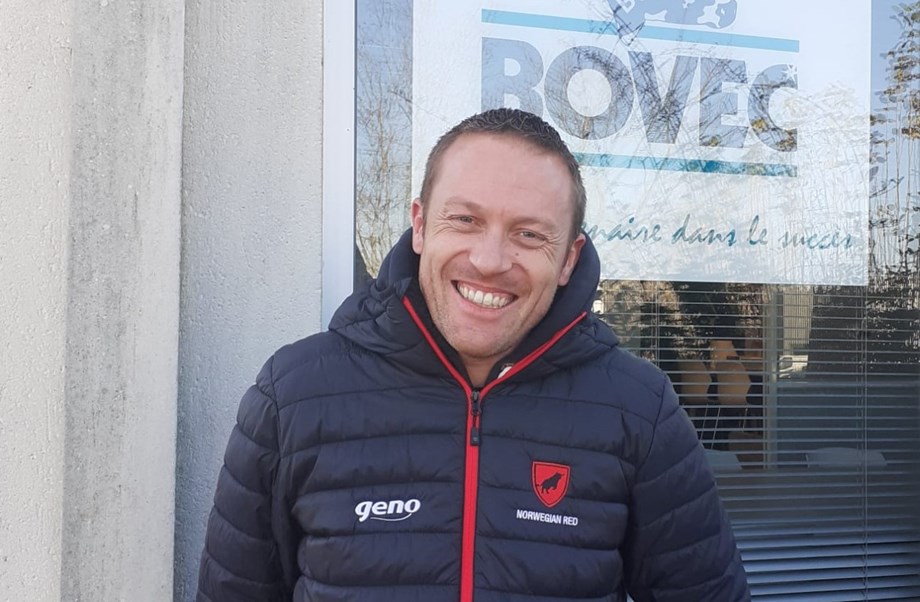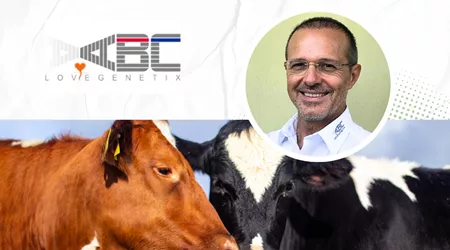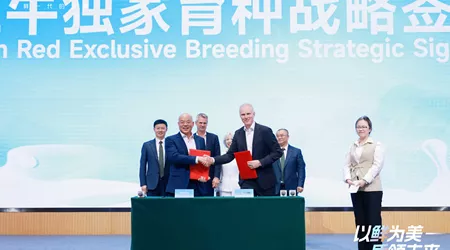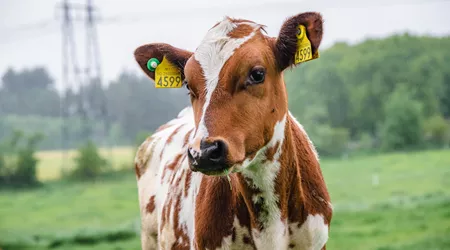Explore the dynamics of dairy crossbreeding with our interview featuring Pierre-Marie Scardin, BOVEC's Dairy Crossbreeding Product Manager for France. Pierre-Marie sheds light on his role, the evolving trends in the French dairy industry, and the positive impact of Norwegian Red genetics.
From addressing perception challenges to sharing practical strategies, this interview provides a straightforward look into the world of dairy farming in France and how the French dairy industry navigates the intersection of innovation, sustainability, and profitability in its ever-evolving landscape.
Please tell us about yourself, your role, and your work for your company.
I'm Pierre-Marie Scardin, proud to have contributed to BOVEC's success since 2010. As the Dairy Crossbreeding Product Manager for France, I also represent BOVEC in the northern east of Brittany.
My days are a dynamic mix of on-field engagement, connecting with customers, promoting dairy and beef on dairy semen, and providing advice on breeding strategies. Beyond that, I dedicate my time to fulfilling my role's missions, offering guidance to French reps and breeders specializing in grassland.
My three core objectives are:
Empowering Teams: Training and assisting French reps to enhance dairy crossbreeding sales.
Innovative Marketing: Collaborating with the marketing team to develop effective communications and tools, is crucial in a French dairy landscape where crossbreeding is not commonplace.
Building Connections: Actively engaging with organizations focused on crossbreeding and partnering with schools to ensure students are well-versed in the significance of dairy crossbreeding.
Please tell us more about the dairy industry and crossbreeding perception in France.
French breeders tend to stick to purebred animals, preferring a conservative approach. The idea of dairy crossbreeding initially gained traction among organic and grassland dairy farmers, and it's now catching the attention of other dairy farmer types.
According to recent studies, about 1 in 10 farmers are now showing interest in dairy crossbreeding. Notably, the Norwegian Red breed is gaining popularity in France, marking just the early stages of its introduction to the country.
What are the main drivers for using Norwegian Red genetics in France?
Holstein cows dominate the French dairy herd, but the Norwegian Red breed stands out as a game-changer. Specifically tailored for Holsteins, it doesn't just coexist; it enhances their genetic prowess. Norwegian Red brings a surge of improvement in fertility, strengthens feet and legs, and adds a muscular edge. Plus, it's not just about the cows; it significantly elevates the survival rates of the calves. The Norwegian Red breed isn't just a choice; it's a catalyst for transforming the genetic landscape of the French dairy industry.
Please give us some insights on the main trends in dairy cattle genetics in France
In France, 10% of dairy farmers go the organic route. Going beyond the conventional, 15% of these forward-thinkers employ milking robots, a technological revolution that touches the lives of 20% of the dairy cows in the country. It's not just about numbers; it's a practical shift that signifies a growing trend towards sustainability and efficiency in French dairy farming.
What type of dairy cow should French dairy farmers anticipate meeting future trends (in the next 5-10 years)?
French farmers are prioritizing the health and strength of their cows, aiming for medium-sized cows with a long and productive life. Looking forward, their focus is on enhancing the durability of their herds and reducing the carbon footprint of their livestock. Again, it's a practical shift reflecting a commitment to sustainability and efficiency in the future of French dairy farming.
Which traits are the most important to consider when you select Norwegian Red sires for your market?
We select the Norwegian red bulls on the following traits:
- Milk production (yields & %)
- Stature
- Udder
- Functional traits
What do you like the best about your job?
I genuinely enjoy engaging with our customers and representatives. Collaborating with farmers on their strategies to maximize profits is both insightful and rewarding. Another aspect of my role that I find fulfilling is pushing myself and the commercial team to position dairy crossbreeding as a solution that enhances profitability for French dairy farms. It's about practical challenges and driving tangible results.



